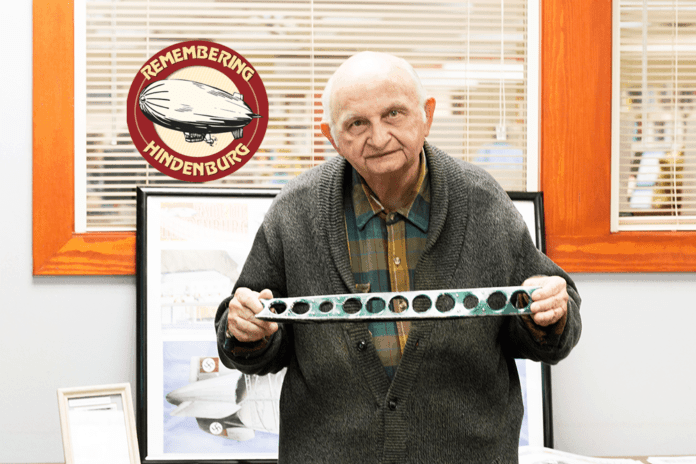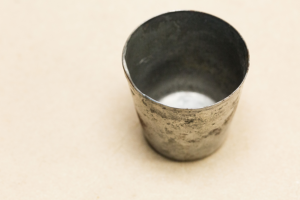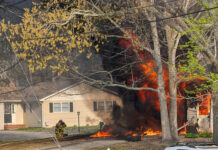
LAKEHURST – Its 80th anniversary of the tragic explosion of the Hindenburg has generated more interest than its 75th.
So said Carl Jablonski, president of the Navy Lakehurst Historical Society, at a slide presentation on the Deutsche Luftschiff Zeppelin 129 – the Hindenburg – at the Plumsted branch of the Ocean County Library on April 6.
Jablonski’s been around for many of the significant Hindenburg anniversaries, but wasn’t 100 percent sure why the 80th has sparked more interest than five years ago. He thought, perhaps, a new generation has aged into interest of the airship disaster that took 36 lives on May 6, 1937.
The small meeting room in the Plumsted branch was filled with guests of all ages who had an interest in the fate of the “Concord of its time,” Jablonski called it.

The D-LZ129, the Hindenburg, had been in operation for only 14 months, Jablonski said. It was the largest airship ever built. The Luftschiffbau Zeppelin GmbH company was in trouble and took money from Adolf Hitler’s Nazi government to stay afloat, he added. Hence, the airship was used as a propaganda machine for the Third Reich, flying over the 1936 Summer Olympics in Berlin and making other trips around Germany.
The dirigible took three years to build, from 1932 to 1935. It cost $3 million in build. It first carried passengers in 1936, making trips not only to Lakehurst, but Rio de Janeiro in Brazil. Round-trip tickets went for $740 round trip per passenger, Jablonski said. The Hindenburg’s flight to Lakehurst on May 3, 1937, was the first of 17 scheduled trips that year.
Inside the meeting room, rain could be heard pounding the roof as thunder rolled. Jablonski said April 6’s weather was similar to what the Hindenburg’s crew faced when they made it to New Jersey on May 6, he said. The crew always took guests to see the Manhattan skyline, and this day flew up and down the Jersey Shore until the storms passed.
What happened next has been recounted thousands of times. Jablonski filled in some tidbits not generally discussed.
Jablonski shared:

Lakehurst, that one-square-mile borough surrounded by Manchester, has the distinction having the first official title of International Airport.
Two hundred fifty men were required to land the Hindenburg, but there were only 60 soldiers stationed at Lakehurst. So, locals would line up, waiting to get a chance to help. They worked morning until night, and were paid $1 for the day’s labor. A person could earn $4 extra each month helping with the landing.
The Hindenburg disaster is still one of the mostly widely known disasters, due to it being filmed. Sure, everyone knows about The Titanic, but no one was there to film it.
Locals, wanting to cash in on the disaster, cleaned out their cupboards and attics and burned items and sold them to eager tourists as “authentic” remains.
The remains of the Hindenburg were taken to a junk yard in Perth Amboy, where the owner cashed in letting people pay for pieces of the dirigible.
Authentic remains—the real kind—sell for tens and hundreds of thousands of dollars today. Jablonski brought with him silverware with the engraved “DZR,” which can fetch $14,000. A cross brace recently sold for $200,000, he said.







